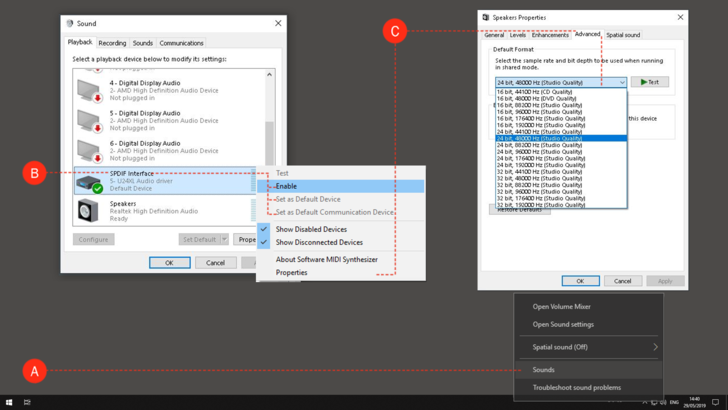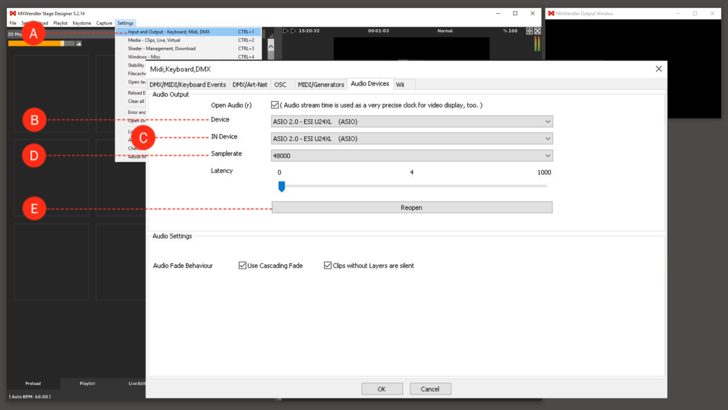Tutorial Optimum Audio Settings with an External Audio Interface: Difference between revisions
No edit summary |
No edit summary |
||
| Line 1: | Line 1: | ||
This tutorial applies to all different OS and MXWendler versions. | |||
<div class="noprint"> | |||
== Introduction== | |||
</div> | |||
In this tutorial, we will go through the settings needed for an optimal audio playback with MXWendler in Windows. | In this tutorial, we will go through the settings needed for an optimal audio playback with MXWendler in Windows. | ||
Latest revision as of 14:29, 30 March 2020
This tutorial applies to all different OS and MXWendler versions.
In this tutorial, we will go through the settings needed for an optimal audio playback with MXWendler in Windows.
Files and Formats
All the standard audio file formats and codecs can be played with the software. In order to get the best results, we suggest using the following formats for rendering your audio output (either as an extra audio file or in your video output):
- Sample Rate: 48.000 Khz
- Bitrate: 320 Kbps or lossless
- Bit Depth: 24
- Codec: Preferably Aac
Tip: It is always better to have an extra file for the audio output for the shows since it gives you more flexibility to tweak and solve possible issues.
Tip: You can use different sample rates in different situations, but for best performance results you have to always remember to use the same sample rate for your output, in software and windows settings.
Settings for Audio Interface
Normally you can use your external audio interface without any issues, with no drivers, or with Asio4all drivers. But we highly recommend installing the latest Asio drivers provided by the manufacturer of your audio interface.
Usually, the drivers come with their own Asio panels. After installing the drivers, you should find and open the Asio panel of your audio interface and select the following settings:
- Sample rate to 48.000Khz
- Latency to somewhere around 64ms
{{#mpdftags: pagebreak}}
Settings in Windows
1. Right-click on the 'Audio' sign in Taskbar and select 'Sounds'. (Or: Click on Win and type mmsys.cpl and hit enter) (A)
2. Go to the Playback tab and find the right audio playback device. (Normally has the name of your audio interface or the model of it)
3. Right-click on it and select 'Enable', 'Set as Default Device' and 'Set as Default Communication Device'. (B)
4. Right-click on it again and select 'Properties' and go to the Advanced tab.
5. Open the drop-down menu from Default Format and select 24bit and 48.000 Khz and click apply. (You can do a test if you have signal in the output by clicking on test) (C)
{{#mpdftags: pagebreak}}
Settings in MXWendler
1. Open MXWendler and go to audio settings:
- Settings → Input and Output → Audio Devices (A)
2. From the drop-down menu of Device choose the proper output device you're using. (B)
- It is always preferred to use the 'Asio' drivers rather than the 'MME' drivers.
3. From the drop-down menu of In-Devices choose the proper output device you're using. (C)
- It is always preferred to use the 'Asio' drivers rather than the 'MME' drivers.
4. Set the sample rate to 48000Khz. (D)
5. Click on 'Reopen' and then Ok to close the window. (D)
Audio should be ready to use and you should be able to playback audio files with no trouble.
Tip: If you have dropouts or glitches in the audio, try bringing the latency to a higher value from your audio interface's Asio panel, until the playback works well.

